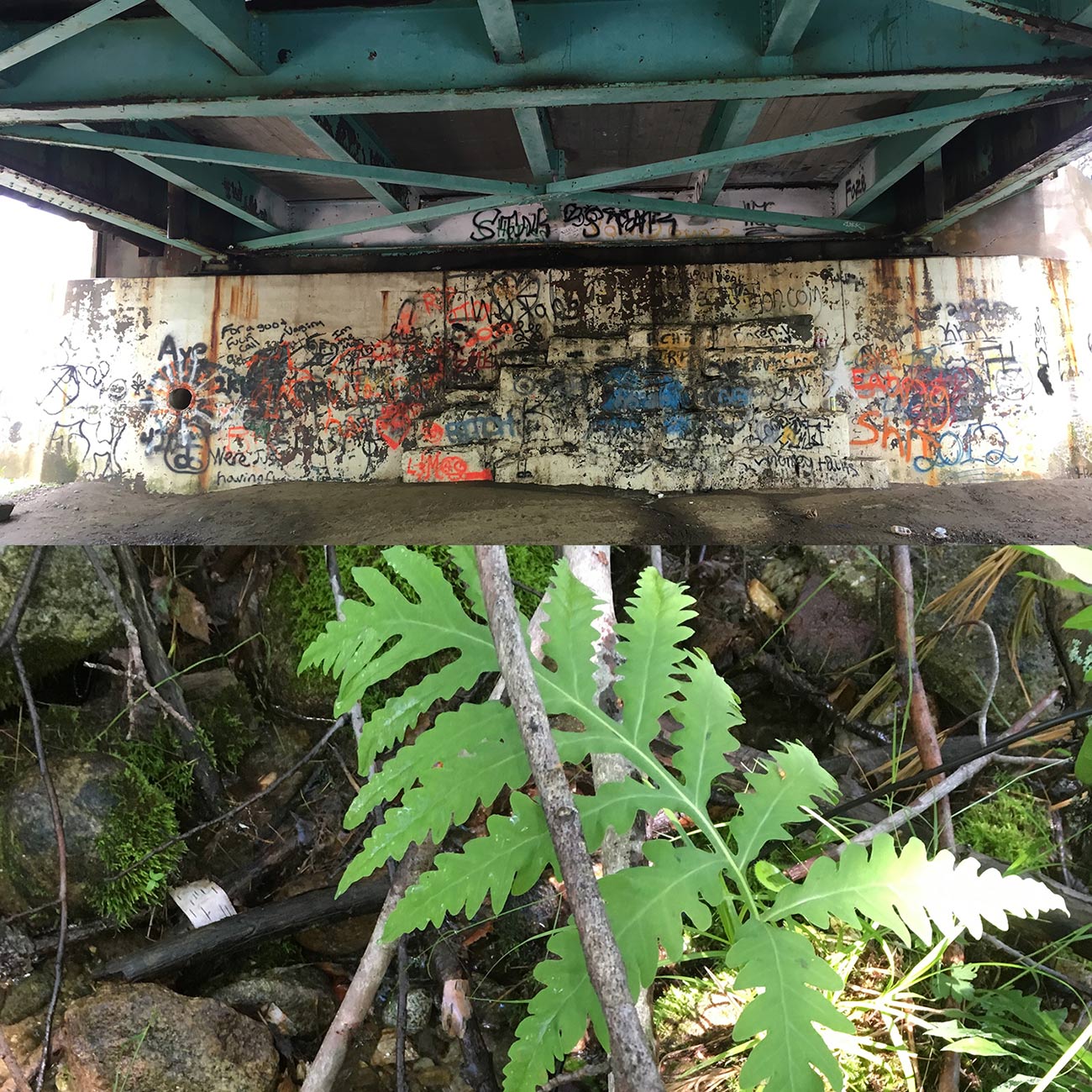The River Valley emerged as an industrial center due to its unique landscape, and it was modern infrastructure that rendered this environment profitable. Massive hydroelectric dams powered the mill and community; water reservoirs and piping circulated fresh spring water; bridges and highways facilitated the circulation of goods; and, most recently, mills have begun to capture wind energy, while deep wells maximize the extraction of groundwater.
In this feature, media artists Steve Norton & N.B.Aldrich produce a six-minute soundscape that captures the relationships between infrastructure and environment. Based on recordings from two locations in the town of Rumford, the soundscape represents dueling realities of the present, “two Rumfords” that heighten the tensions between industrial development and environment, softscape and hardscape, past and present. It provokes the question: Which sounds might the community most cherish, and what do they represent? —Maine’s River Valley report editors
Artist Statement
Two Rumfords is a soundscape composition juxtaposing two distinct yet important sonic environments available in the River Valley area. The material for both locations was recorded on the same day. The audio recordings themselves consist of single, continuous takes of local ambience as well as multiple simultaneous tracks from various sensors such as hydrophones and contact microphones. Each location in the composition is represented by stereo ambient mics and three different sensors designed to add information that would not necessarily be available to the ear of a listener standing in the space.
One of the environments captured is a natural spring on a local mountain, Mt. Zircon; the other is the bank of the Swift River, which lies under the Main Street bridge that connects the towns of Mexico and Rumford, just upstream from the Nine Dragons paper mill. These places exhibit the distinct, conflicting characteristics that the River Valley is home to: the remote and undeveloped areas of mountains, lakes, and streams (Mt. Zircon) and the singular industrial presence of the mill that dominates the valley and river (the bridge).
The composition takes representative slices of each simultaneous session and fades one into the other over time. The goal is to define and contrast these soundscapes as a way to apprehend the differences they provide the local community. This composition is not intended as a metaphor. It is not a statement about the local history, about economic conditions, or about a particular political or philosophical outlook. It is, however, evocative of all these things as they are embedded in the difference between these two nearby locations.
The Two Rumfords audio was mastered by Duane Shimmel.
Two Rumfords
Listen to the soundscape “Two Rumfords” by Steve Norton & N.B.Aldrich.
Biographies
is a sound artist and musician living in Orono, Maine. His artistic research examines electroacoustic music, improvisation as a method, the environment, modernity, and society. His practice is currently focused on the gathering of field-recorded sound which he utilizes in electroacoustic composition as well as in performative, improvisational contexts. His interest is to increasingly bring the outside world into his work via field recording and topical decisions that engage issues of critical concern. This is exemplified by his recent work, Requiem, a four-channel sound composition on the topic of extinction, created using the voices of recently extinct birds and frogs. Norton has composed and/or performed avant-garde jazz, experimental music, and free improvisation around the US and Canada for over 30 years and has over 25 recorded releases to his credit. He holds an MFA in Intermedia from the University of Maine.
is a new media artist, musician, and educator residing in Sedgwick, Maine, who creates installation, video, performance, and acousmatic art. He is an adjunct assistant professor at the University of Maine in new media and intermedia. Currently his work focuses on collecting, refining, and redistributing information, both aesthetic and practical, across varying mediums. In the process, the methods and metaphors of the “information age” become instruments of their own critique. His work has been shown internationally at such venues as Artists Space, Engine 27, Art Interactive, the Casoria Contemporary Art Museum, the Festival de Arte Sonoro, Hipersonica Festival, The National Museum of Singapore, the Optica Festival, Dance Theatre Workshop, Bates College Museum of Art, and many others.
The views expressed here are those of the authors only and do not reflect the position of The Architectural League of New York.

